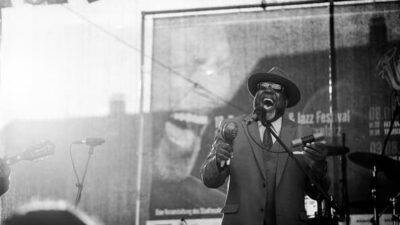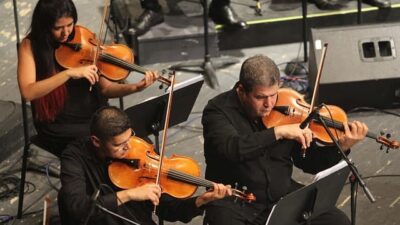A few days ago, my friends and I tried to remember as many people as possible who, in our opinion, have changed the course of history. Well, if we expand on that theme, we can highlight 10 key aspects in different areas of human activity that have influenced the life, the outlook, or just the taste of all of humanity. Today I would like to highlight 10 jazz standards that, in my opinion, are the foundation of popular jazz music. Jazz standards are jazz tunes or themes that were once written by someone and are so memorable that all jazz musicians and almost all people know them.
Chances are, many people know the jazz compositions I’ve collected, but each standard has its own story that not everyone knows.
Autumn leaves
Originally, in 1945, it was a French song called “Les Feuilles mortes” (literally “Dead Leaves”) with music by Joseph Kosma and lyrics by poet Jacques Prevert. Yves Montand (with Irene Joachim) introduced Les Feuilles mortes in 1946 in Les Portes-de-la Nuit. In 1947, American composer Johnny Mercer wrote the English lyrics to the song, and Joe Stafford was one of the first to perform a new version of the song. Autumn Leaves became a jazz and pop standard in both languages, as well as in the instrumental version.
Let it snow! Let it snow! Let it snow!
The song is also known as “Let It Snow.” It was written by lyricist Sammy Cahn and composer Jule Styne in 1945. Interestingly enough, it was written in July 1945 in Hollywood during one of the hottest days of summer.
What’s even more interesting is that I think just about everyone in our blue globe of the universe knows it, even those who have lived in the desert all their lives. Personally, I always sing this song when it’s snowing or raining (Let it rain! You can also Let it fog!)
I’ve got you under my skin
Not everyone knows this song that has been sung by all the jazz singers, if not on stage, then certainly in the shower. It was written by Cole Porter in 1936. In this video (as in the previous one) it is performed by my favorite musician Jamie Cullum.
Fly me to the moon
And this theme is one of those to which it is most comfortable to swing, even to me, a person far from swing. The masterpiece was written by Bart Howard in 1954.
Take five
If a musician wants to test his musical instincts on an unconventional rhythm, Take five is the best jazz composition to experiment on. The size of five quarters unequivocally shows that the song deserves attention. By the way, there are so many songs that begin as the famous standard, but it was Paul Desmond who invented it “first,” and it was first introduced by the great Dave Brubeck Quartet in the Time Out album in 1959.
The entertainer
Well, everyone knows that. Written by Scott Joplin, the founder of the ragtime style, over 110 years ago (in 1902). It is a classic of ragtime. This jazz composition returned to international fame during the “ragtime revival” in the 1970s when it was used as the theme song for the Oscar-winning movie The Sting.
Singing in the rain
“Singing in the Rain” is a song with lyrics by Arthur Freed and music by Nacio Herb Brown, written in 1929, made famous after the movie of the same name. I always get excited after watching the music video!
Summertime
When people talk about jazz, they often mean Summertime. It was written by George Gershwin in 1935 for the opera Porgy and Bess. The authors of the text are DuBose Hayward and Ira Gershwin (George’s brother). It is said that Gershwin based the aria on the Ukrainian lullaby “Oy khod na kolo vikon,” which he had heard in New York performed by the Ukrainian National Choir, conducted by Alexander Koshitz.
Feeling good
“Feeling Good” (also known as “Feelin ‘Good”) is a song written by British singer-songwriters Anthony Newley and Leslie Bricusse in 1965. Since then the song has been recorded by many performers including the great Nina Simone.
Hello Dolly
Well, where would we be without Armstrong! But interestingly enough, the author of the music and lyrics of the famous song was Jerry Herman, not Armstrong – the man who first set foot on Mars. The song was very popular in 1964, when it was played on the radio as much as Lady Gaga is played today. But it was everyone’s favorite Louis Armstrong who made it what we know it to be today.
Of course, the music is not limited to these 10 masterpieces, but they are, in my opinion, some of the best compositions the modern world has given us.










